Twelve years after Yemen uprising, people’s dreams are shattered
How the 2011 uprising turned sour.
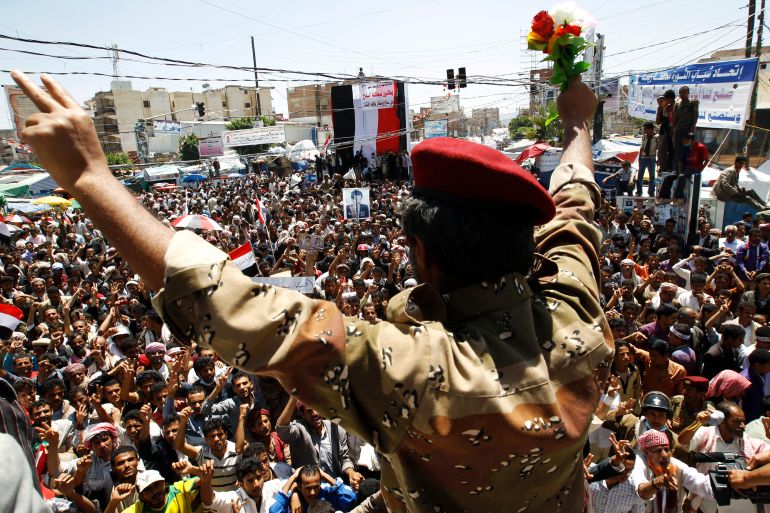
Sanaa University students pass through Change Square every day, heading to lecture halls or back home, or to grab a tea in one of the cafés that line the square. They walk quietly, or chatter aimlessly in groups; nobody seems to be thinking about political action or protesting or raising their voice against the authorities any more.
Even the politically minded probably know there’s no point in political action because 12 years ago, in February 2011, thousands of youth filled the square and the streets of the Yemeni capital in unstoppable mass protests that spread like wildfire in many cities, calling for the end of the 33-year rule of Ali Abdullah Saleh. And that has not ended well.
Keep reading
list of 4 itemsHow can we reduce global food insecurity?
Palestinian Prisoner’s Day: How many are still in Israeli detention?
‘Mama we’re dying’: Only able to hear her kids in Gaza in their final days
At the time, the Arab Spring had taken the region by storm, and the power of the people was being demonstrated on the Arab street in one country after the other. And even those who did not fully agree with the way things were happening were seemingly filled with pride, overwhelmed with enthusiasm at the power of the people as they pushed for change, free of fear.
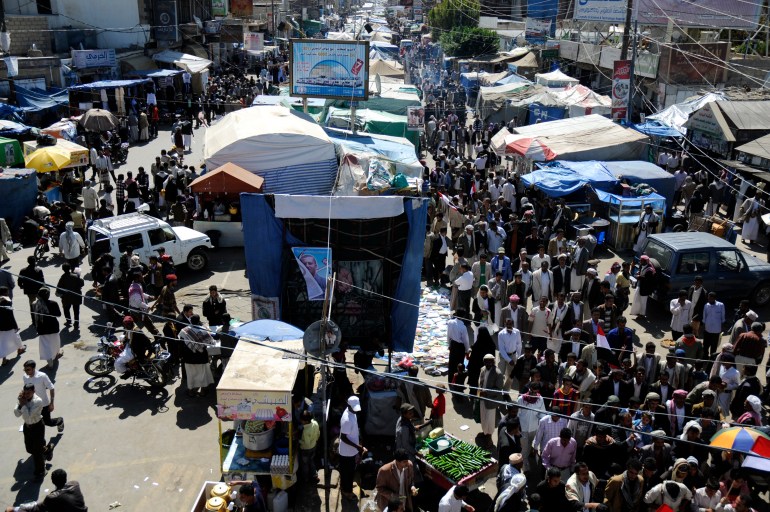
In Yemen, millions of protesters shouted their demands for social equality, a better economy, and healthier democracy on the streets and camped in the squares, even though there were Yemenis who were less enthusiastic, worrying about chaos or that this was a coup in sheep’s clothing.
As Yemen marks 12 years since the February 2011 uprising, aspirations remain unfulfilled and the unthinkable has happened as the country slipped into years of strife and then war, which pushed it into the world’s greatest humanitarian crisis.
Today, 17 out of 33 million people in Yemen are food insecure – 3.5 million of whom are acutely malnourished, according to the United Nations. More than 4.3 million people have been internally displaced in Yemen since 2015.
Change
Change Square itself has not, ironically, changed. The square that sits at the heart of Sanaa looks much the same as it was before the 2011 uprising, lined with cafés, shops and kiosks selling all sorts of things, and teeming with pedestrians and cars, weaving around one another. The shops and cafés did a booming trade during the protests, providing the camped-out protesters needed all sorts of meals, drinks, groceries and more.
When the protests were over in February 2012 and the tents were taken down by the authorities, which took about a month, life returned to normal surprisingly quickly and the people living around the square were relieved that the noise level had gone down and the area was calmer. Since then, not much has changed.
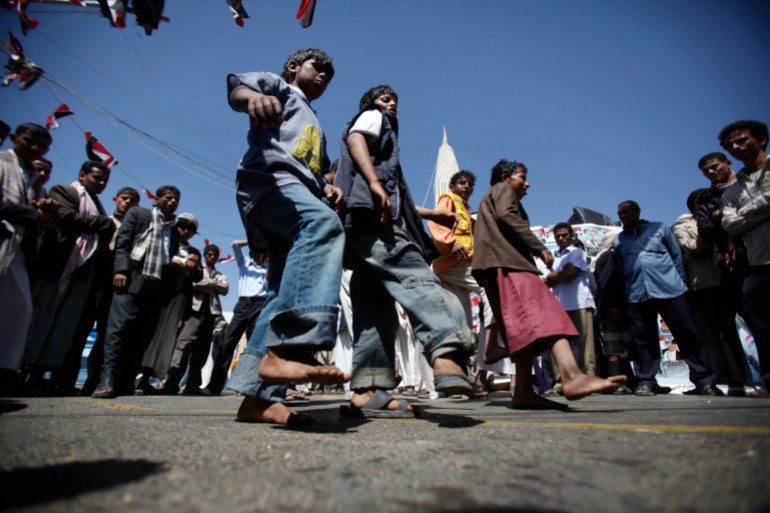
But outside the square, Yemen now lies split between Houthi forces in the north and a divided anti-Houthi coalition in the south, which includes secessionists.
The southern separatist agenda did not appear suddenly after the breakout of the February 2011 uprising. It dates back to 1994, when a civil war between the north and south flared up, four years after the declaration of national unity.
However, the 2011 uprising presented an opportunity for the secessionists who expanded their presence in the south and today have firm control in a number of provinces.
‘My mind drew beautiful images of Yemen’s future’
Saleem Ghalib sits at a sunny table in a café in Maeen, thumbing through photos of Yemen’s uprising on his mobile phone and remembering the time he spent on Change Square. The slim 35-year-old is married now and father to a baby girl, and he worries endlessly about the future.
Ghalib, a clerk with a humanitarian organisation in Sanaa, loves Yemen, he says, and his dream is that the country gets a united leadership that would actually allow the people to enjoy riches that could be made off natural resources like oil, gas and fisheries.
When the protests were rocking Change Square, Ghalib was an optimistic university student who ran out to the square as soon as his classes at Sanaa University were over, joining the daily rallies and activities. At the time, he had lofty goals of seeing Yemen as a better country. It never occurred to him that the country’s future could become as bleak as it is today, overrun with war, hunger, and displacement.
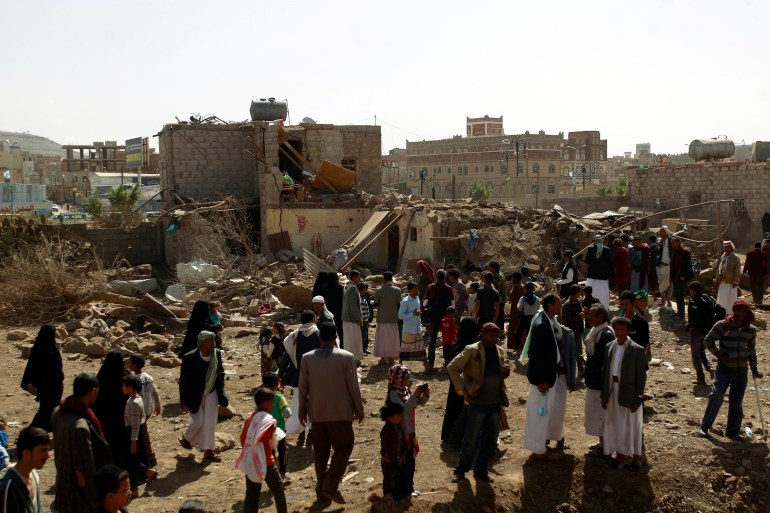
“I was optimistic, and my mind kept drawing beautiful images of Yemen’s future. Sadly, the country gradually drowned in violence. The war replaced hopes with worries,” Ghalib told Al Jazeera.
After a year of non-stop protests and marches, Saleh resigned on February 25, 2012, and his vice president, Abd-Rabbu Mansour Hadi, assumed power.
Ghalib remembers how Saleh’s stepping down filled him and his fellow protesters with pride and euphoria. “Everyone around me in the tent at Change Square assumed that Yemen had started on the path to peace and prosperity the moment Saleh officially stepped down in February 2012. That was an immature calculation.”
Neither Ghalib nor his fellow protesters could have imagined at the time that war would soon break out, pinning hope on peaceful rallies and political dialogue. As time passed, the stage was overshadowed by violence, and uncertainty about Yemen’s future grew.
“The difference between the pre-uprising time and the present is mind-boggling. We attempted to rise but fell to abysmal failure, a scenario we had not envisioned or wanted,” said Ghalib.
Disastrous turns of events
Civil war did not break out in Yemen right away; first, there were political disputes, as several parties tried to gain a foothold. For the citizens, the first tangible effects were security issues, fuel price increases and power shortages, but even then, Ghalib did not lose hope. He told himself the crises were temporary “side effects” of change.
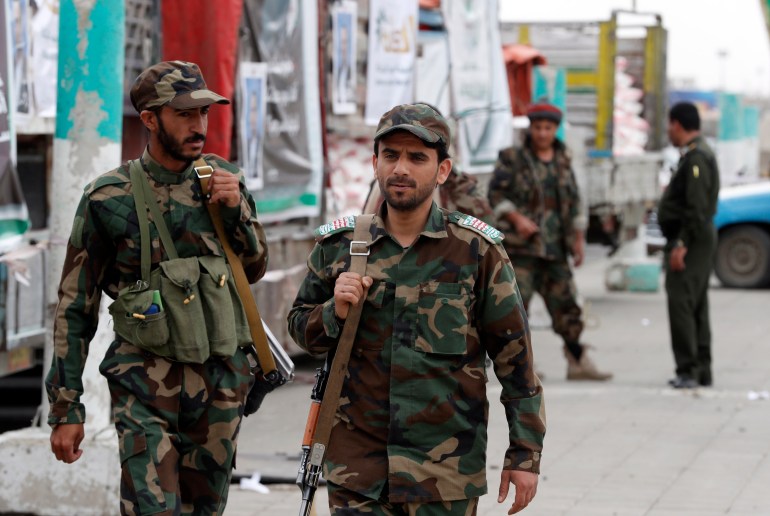
That hope evaporated quickly in September 2014, when the Iran-aligned Houthi rebels took over Sanaa by force. The Houthis had been in crowds in 2011, taking part in the popular uprising and marching peacefully with the other thousands in the streets. When the jockeying for power after Saleh’s departure fractured the political scene in Yemen, they started to take matters into their own hands, militarily. Initially, they captured Saada province, then Amran, finally advancing on Sanaa while their confidence grew.
Ghalib’s rosy dreams about his country’s future were shattered.
“The fall of Sanaa to Ansar Allah [Houthis] was the birth of the gloom in Yemen. Our uprising was peaceful, and their forceful takeover of Sanaa robbed our struggle of that,” he said sadly.
According to Ghalib, the Houthis’ violent invasion of Sanaa was the turning point that marked the death of the uprising’s achievements. “Their aggressive rise made me believe that the objectives of the uprising are no longer achievable.”
Ghalib’s second shock came on March 26, 2015. In the middle of the night, a string of massive explosions rocked Sanaa, leaving him and millions of civilians terrified and confused.
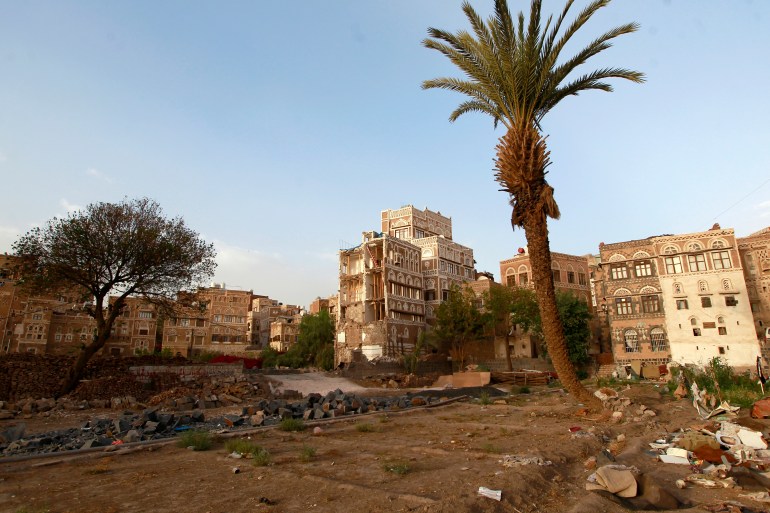
“I anxiously browsed local news websites, and I came to know about the Saudi-led coalition military campaign against the Houthis. My despair deepened because such a brutal development was none of the aims of our uprising.”
The Saudi-led coalition intervened in Yemen, responding to an official request by Hadi, who sought military support from Saudi Arabia to counter the Houthis. The campaign was meant to crush them in a matter of weeks.
But the war has ground on for years, leading to the colossal destruction of civilian infrastructure and the deaths of thousands of civilians. In April last year, Hadi conceded to a leadership council composed of eight members in a bid to end the fighting.
The only winner
Yemenis who chanted for a regime change 12 years ago feel their efforts have failed.
But it was not just the protesters and their uprising who failed; the uprising’s opponents, the regime, also failed, Abdulsalam Mohammed, the head of Abaad Studies and Research Center, said.
Mohammed had been among the peaceful protesters with hopeful dreams of Yemen’s future in their hearts. But today, he told Al Jazeera, “The winners are the Houthis.” His centre used to be based in Sanaa but had to move to Turkey after the Houthis took the city.
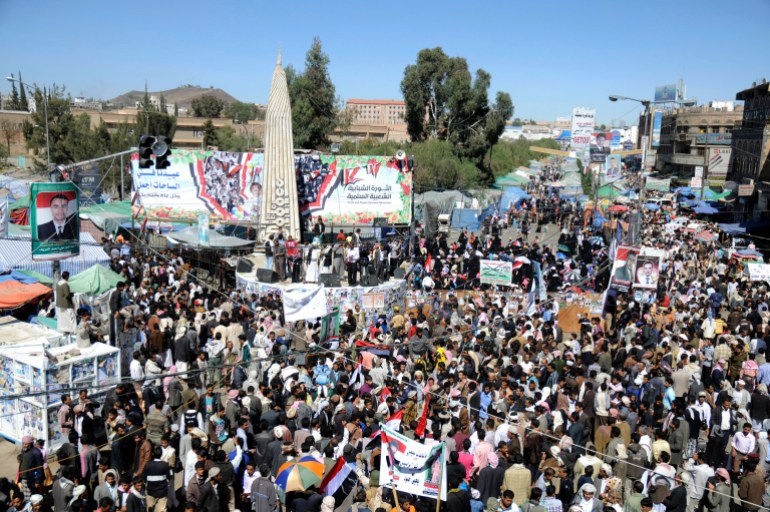
The Houthis now control about 12 of Yemen’s provinces and nearly two-thirds of the population lives under their rule, he said. With their position strong in the north, Mohammed does not feel there is a force that can oppose them in the face of the divisions in the south.
Despondency about Yemen’s present and future is evident. The country is now torn apart by years of war and there seems to be no solution in sight.
As Ghalib puts it, “The 2011 uprising was a ray of hope to address solvable economic and political issues. Today, many questions are unsolvable and will stay that way for ages.”
At the grassroots level, people in Yemen, north and south, are neither hopeful nor happy. Their chief concerns centre around the bare necessities of life: Regular salaries and better access to basic services such as electricity and water. An insecure situation that can only fuel anger about the consequences of the uprising.
But Mohammed still has some faith in the seeds of the 2011 uprising. “The Houthi win will not be everlasting. The people will rise again and retake the helm,” he said.